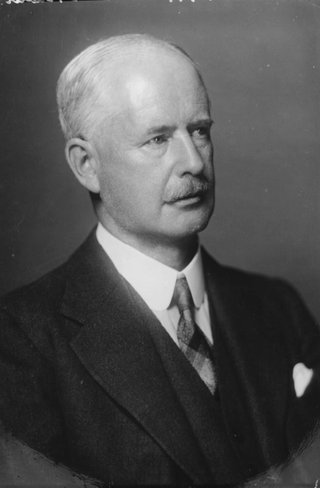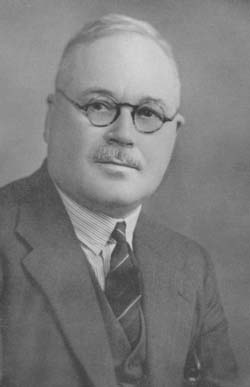
Thomas Petch (born Hornsea, Yorkshire, 11 March 1870; died King's Lynn, Norfolk, 24 December 1948) was a prolific English mycologist and plant pathologist best remembered for his work on the interaction between fungi and insects.

Thomas Petch (born Hornsea, Yorkshire, 11 March 1870; died King's Lynn, Norfolk, 24 December 1948) was a prolific English mycologist and plant pathologist best remembered for his work on the interaction between fungi and insects.
Petch was educated at the choir school of Holy Trinity at Hull, and taught at the King's Lynn Grammar School and Leyton Technical Institute while preparing for external degrees at the University of London. Petch had an early interest in natural history, but Charles Plowright, a doctor and mycologist in King's Lynn, encouraged him to study fungi. Through a friendship with George Massee of the Royal Botanical Gardens Petch was appointed Mycologist to the Government of Ceylon in 1905. He returned to England briefly to marry Edith Mary Plowright (b. 1875), Charles' daughter, in 1908.
Petch held this position until 1924. After a leave to visit England, he returned to Ceylon as the founding director of the Tea Research Institute. In 1928 he retired to England, where he lived in North Wootton in the house formerly owned by his father-in-law, near King's Lynn.
During his time in Ceylon, Petch studied the fungal diseases of rubber, cocoanut palm, tea, pepper, tobacco, and other crops grown there. He wrote The Diseases and Pests of the Rubber Tree (1921) and Diseases of the Tea Bush (1924), which were used for decades afterwards. He studied all the local fungi as well, and his life work, published posthumously in 1950, was his Fungi of Ceylon.
Petch became interested in fungi which lived with or on insects, starting in 1906 with a paper on fungi in termite nests. Between 1921 and 1944 he wrote 13 "Studies on entomogeneous fungi" and 7 "Notes on entomogeneous fungi", all except the first published in the Transactions of the British Mycological Society (which Petch had served as president of in 1920). He also compiled a list of entomogeneous fungi in England (1932).
Tom and Emily Petch had at least one son, Charles Plowright Petch (1909-1988), who became a surgeon like his grandfather, was also interested in mycology, and published a Flora of Norfolk of 1968. [1]

Mycology is the branch of biology concerned with the study of fungi, including their taxonomy, genetics, biochemical properties, and use by humans. Fungi can be a source of tinder, food, traditional medicine, as well as entheogens, poison, and infection. Mycology branches into the field of phytopathology, the study of plant diseases. The two disciplines are closely related, because the vast majority of plant pathogens are fungi. A biologist specializing in mycology is called a mycologist.
Gordon Herriot Cunningham, CBE, FRS was the first New Zealand-based mycologist and plant pathologist. In 1936 he was appointed the first director of the DSIR Plant Diseases Division. Cunningham established the New Zealand Fungal Herbarium, and he published extensively on taxonomy of many fungal groups. He is regarded as the 'Father' of New Zealand mycology.

Sir Edwin John Butler was an Irish mycologist and plant pathologist. He became the Imperial Mycologist in India and later the first director of the Imperial Bureau of Mycology in England. He was knighted in 1939. During his twenty years in India, he began large scale surveys on fungi and plant pathology and published the landmark book Fungi and Disease in Plants: An Introduction to the Diseases of Field and Plantation Crops, especially those of India and the East (1918) and has been called the Father of Mycology and Plant Pathology in India.

The British Mycological Society is a learned society established in 1896 to promote the study of fungi.

Charles Horton Peck was an American mycologist of the 19th and early 20th centuries. He was the New York State Botanist from 1867 to 1915, a period in which he described over 2,700 species of North American fungi.
Christopher Edmund Broome was a British mycologist. The standard author abbreviation Broome is used to indicate this person as the author when citing a botanical name.

Arthur Disbrowe Cotton, was an English plant pathologist, mycologist, phycologist, and botanist. The standard author abbreviation Cotton is used to indicate this person as the author when citing a botanical name.

Worthington George Smith was an English cartoonist and illustrator, archaeologist, plant pathologist, and mycologist.

Elsie Maud Wakefield, OBE was an English mycologist and plant pathologist.
Peter Darbishire Orton was an English mycologist, specialising in agarics.
Richard William George Dennis, PhD, was an English mycologist and plant pathologist.

Carleton Rea was an English mycologist, botanist, and naturalist.
Charles David Badham FRCP was an English writer, physician, entomologist, and mycologist.

Charles Crossland was an English mycologist.
Sahay Ram Bose was an Indian botanist known for his pioneering work in the study of bracket fungi and the discovery of antibiotics Polysporin and Campestrin. In a research career spanning more than half a century, Bose published 120 papers on various aspects of fungi in an array of academic journals across Europe, America, and Asia. Bose is credited for pioneering work on mycology and the antibacterial properties of fungi.

Charles Bagge Plowright was a British medical doctor and mycologist.

Leucocoprinus fragilissimus, commonly known as the fragile dapperling, is a species of gilled mushroom in the family Agaricaceae.

Constantine John Alexopoulos was an American mycologist. He was the main author of the landmark book Introductory Mycology, commonly used in mycology and mycology-related courses in undergrad and grad schools around the globe. Introductory Mycology was translated into five languages.

Guy Richard Bisby (1889–1958) was an American Canadian mycologist and botanist in plant pathology. He spent his early career working as a professor at the University of Minnesota and University of Manitoba in plant pathology, and his late career as Senior Assistant Mycologist at the Imperial Mycological Institute in Kew, England. He published around fifty books and papers in mycology that extensively contributed to the taxonomy and nomenclature of fungi.
Martin Beazor Ellis was a British mycologist, known as a leading expert on the taxonomy of pigmented hyphomycetes. He was the president of the British Mycological Society for the academic year 1973–1974.
![]() Media related to Thomas Petch at Wikimedia Commons
Media related to Thomas Petch at Wikimedia Commons